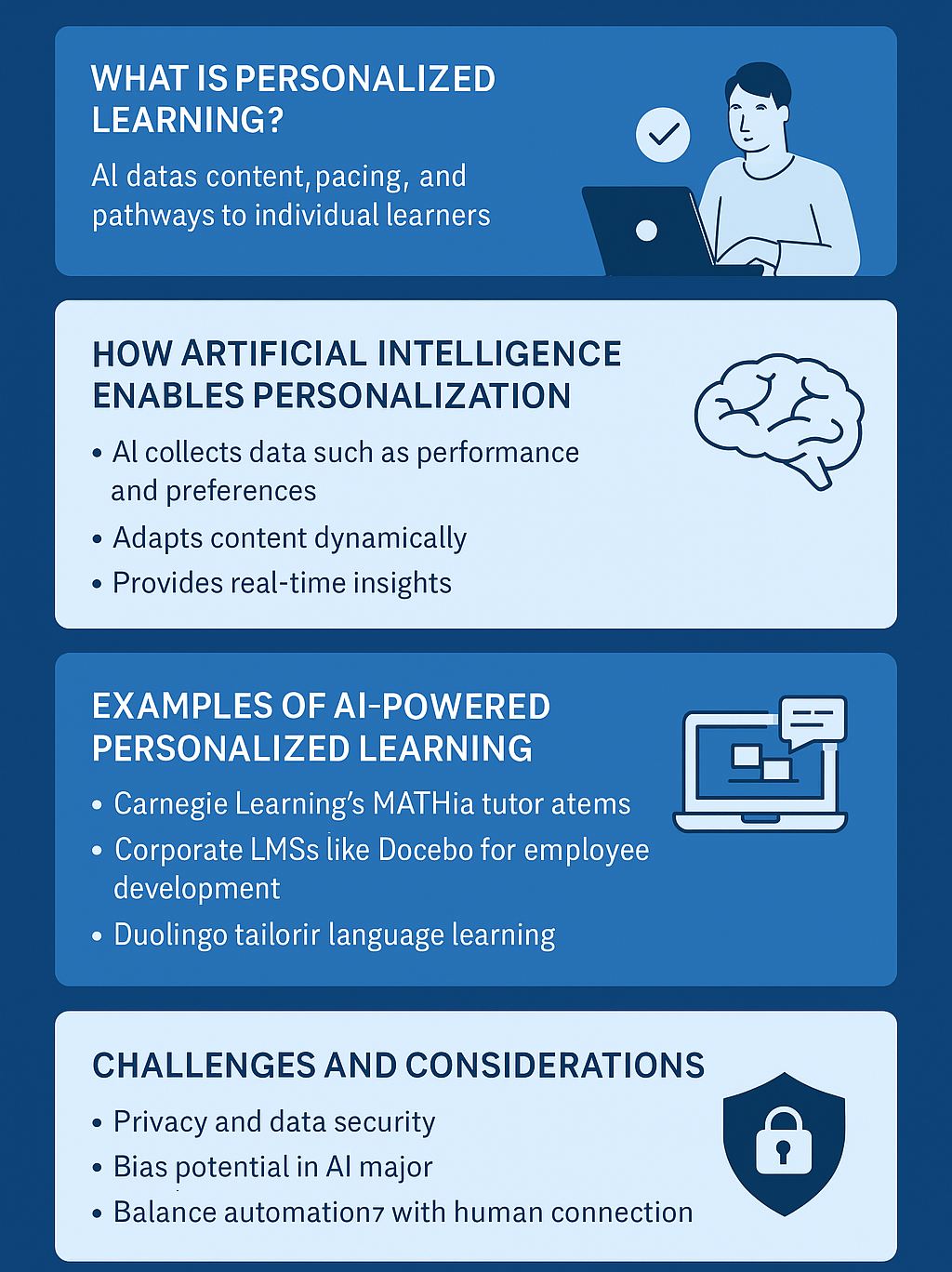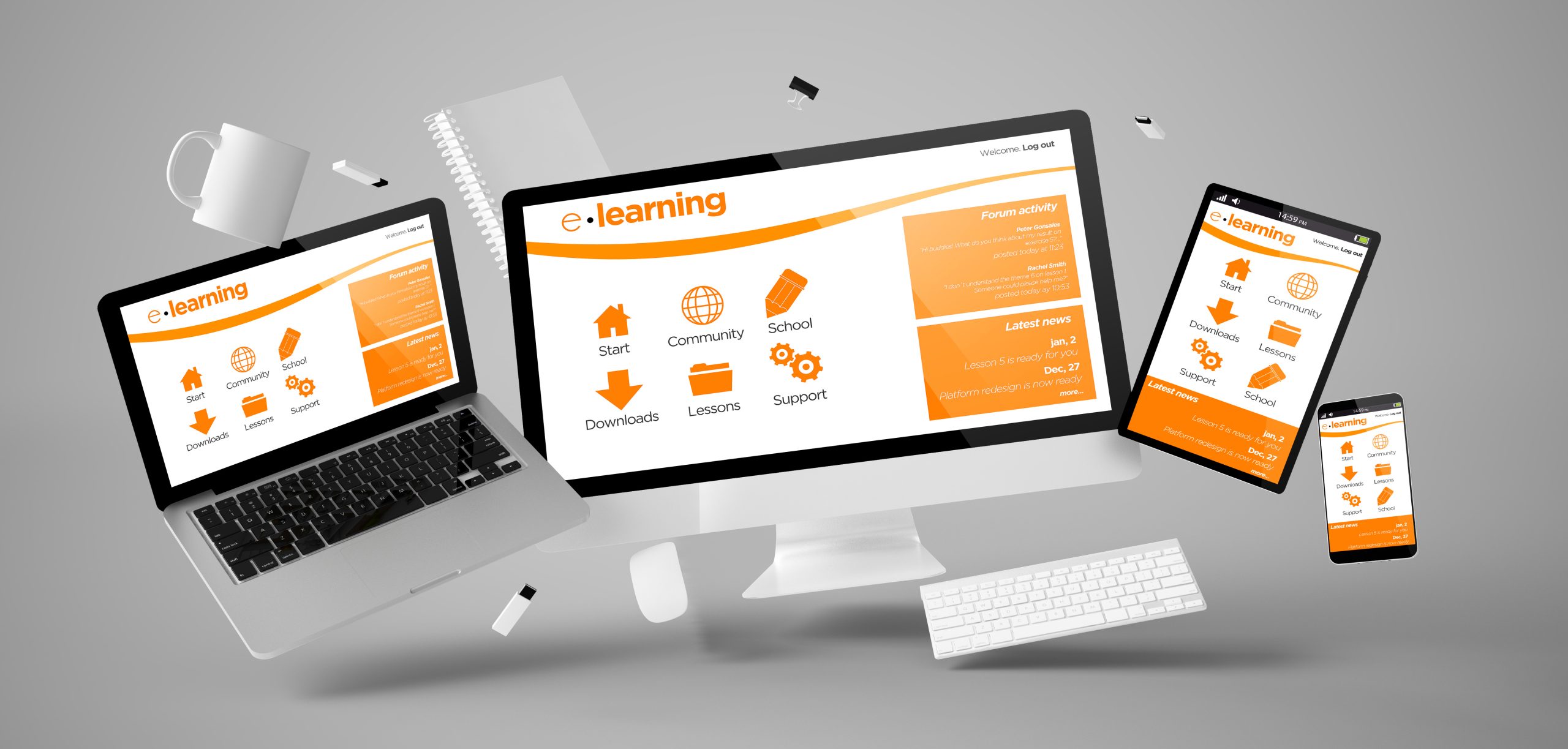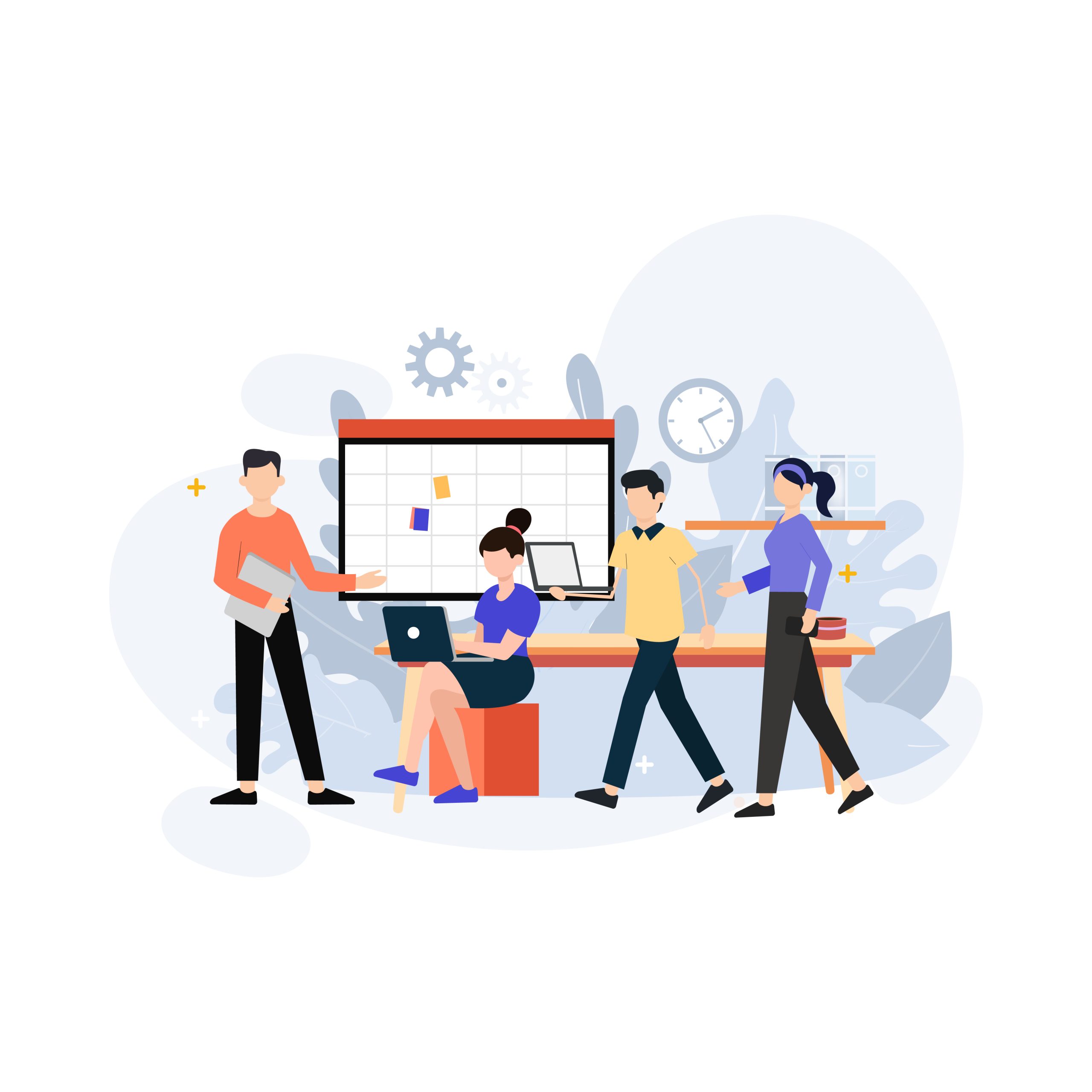In today’s fast-paced, tech-driven world, one-size-fits-all education is quickly becoming a thing of the past. Learners demand relevance, flexibility, and content that meets them where they are. Enter Artificial Intelligence (AI)—the game-changer making personalized learning possible and scalable.
As instructional designers, educators, and learning and development (L&D) professionals, we’re being called to shift from static content to intelligent, adaptive experiences that truly center the learner. But what does personalized learning with AI look like in practice? How does it work? And how can we design for it?
Let’s explore the how, the why, and the what’s next of AI-powered personalized learning.
🔍 What is Personalized Learning?
Personalized learning is a strategy that tailors content, pacing, pathways, and tools to meet individual learner needs, preferences, and goals. Unlike traditional learning models, where every learner receives duplicate content regardless of background or progress, personalized learning dynamically adapts the experience to increase engagement and improve outcomes.
With the rise of AI, personalization has evolved from a buzzword into a real, implementable solution. AI-enhanced learning systems collect and analyze user data to adjust content delivery in real time, creating responsive and individualized learning experiences.
🤖 How Does Artificial Intelligence Enable Personalized Learning?
AI is the engine behind modern personalized learning, using algorithms to process data and drive recommendations. Here’s a step-by-step breakdown of how it works:
1. Data Collection and Analysis
AI begins by gathering data about the learner, such as:
- Performance on quizzes and assessments
- Time spent on specific modules
- Learning preferences and behavior
- Prior knowledge or skills (often through diagnostics)
AI uses machine learning models to identify patterns and predict the learner’s needs and knowledge gaps.
2. Adaptive Content Delivery
Based on the data, AI-powered platforms modify content delivery in several ways:
- Recommending different content types (video, audio, text)
- Altering the difficulty level of questions
- Redirecting learners to remedial or advanced material
- Providing real-time, personalized feedback
3. Continuous Optimization
AI doesn’t just personalize once—it evolves. As learners engage with content, the system collects data and refines its suggestions, ensuring the experience remains relevant and practical.
💡 Real-World Examples of AI-Powered Personalized Learning
Let’s explore how different industries and platforms leverage AI to create personalized learning experiences.
🏫 Example 1: K–12 & Higher Education – Carnegie Learning
Carnegie Learning’s MATHia platform uses AI to mimic a human tutor. As students solve problems, the software evaluates their thinking process, not just the final answer. It then offers personalized hints and scaffolding based on individual performance.
Result: Increased math comprehension and student confidence in thousands of schools.
🧑💼 Example 2: Corporate Training – Docebo & EdCast
Corporate LMS platforms like Docebo and EdCast use AI to push personalized learning paths. For instance, a new hire in marketing might receive targeted onboarding videos, skill development courses, and curated reading lists—based on role, location, performance, and career goals.
Result: Faster onboarding, better knowledge retention, and improved employee satisfaction.
🌎 Example 3: Language Learning – Duolingo
Duolingo’s AI evaluates how learners perform across lessons and dynamically adjusts the difficulty and the pacing. It also uses spaced repetition and predictive analytics to help learners retain vocabulary and grammar over time.
Result: Over 74 million active learners benefiting from real-time personalized learning paths.
🧠 Why Instructional Designers Should Embrace AI for Personalization
As an instructional designer, you may wonder: Will AI replace us? The short answer? No.
AI is a tool, not a threat. When used strategically, it actually empowers designers by:
- Reducing time spent on repetitive tasks (like quiz generation or branching scenarios)
- Providing real-time learner analytics to refine learning objectives
- Enabling scalable personalization, which was once impossible with human-only workflows
- Allowing designers to focus on high-impact areas like storytelling, creativity, and learning experience design
Embracing AI doesn’t mean giving up control—it means enhancing your instructional strategy with more innovative tools.
⚖️ Challenges and Ethical Considerations
Of course, AI isn’t perfect. There are valid concerns and challenges we must navigate:
🔐 Privacy and Data Security
Collecting learner data means handling it responsibly. Be transparent about what data is collected, how it’s used, and ensure compliance with GDPR, FERPA, or HIPAA where applicable.
🧑⚖️ Bias in Algorithms
AI can only be as fair as the data it’s trained on. If that data is biased, the personalized learning experience may be flawed. Instructional designers must work with AI ethically, advocating for equity and inclusivity in algorithm design.
🧭 Loss of Human Connection
While AI can simulate feedback, it can’t replace meaningful relationships. Successful learning still hinges on human facilitation, community, and emotional intelligence.
🔧 Getting Started: Tools and Platforms for Personalized Learning with AI
Ready to explore? Here are some accessible tools you can begin experimenting with:
✅ ChatGPT (OpenAI): Use for content ideation, branching logic drafts, or creating dynamic assessments.
✅ Synthesia: Create AI-generated video lessons with multilingual personalization.
✅ Docebo Learn LMS: Offers AI-powered content curation, skills tracking, and personalized pathways.
✅ Smart Sparrow: Provides adaptive elearning powered by learner behavior and feedback.
✅ Coursera & edX for Business: Recommend course tracks based on job roles, prior skills, and learning history.
You don’t need to overhaul your entire instructional design approach overnight. Start small—pilot an AI tool, test adaptive feedback, or personalize a single course module.
🧩 The Future: AI + Human-Centered Learning
The future of instructional design will be blended intelligence—one where AI and human creativity work together to deliver deeply relevant, inclusive, and impactful learning experiences.
As learners expect more autonomy, flexibility, and personalization, instructional designers are under pressure to create experiences that are not only smart but also empathetic and ethical.
🔥 Final Thoughts: Let’s Build Better Learning—Together
Personalized learning with AI isn’t just a trend—it’s a paradigm shift.
And as instructional designers, we are uniquely positioned to lead this transformation.
So let’s keep asking:
- How can we design with AI, not around it?
- How do we center the learner and respect their data?
- How can we scale personalization without losing the human touch?
💬 Let’s start the conversation. Are you experimenting with AI in your learning strategy? What challenges—and successes—have you experienced?
Please share your thoughts below, and let’s continue shaping the future of learning.👇
🔖 References:
- Luckin, R. et al. (2016). Intelligence Unleashed: An Argument for AI in Education. Pearson.
- Duolingo Research: https://research.duolingo.com/
- Docebo AI LMS Overview: https://www.docebo.com/
- Smart Sparrow Adaptive eLearning: https://www.smartsparrow.com/
- UNESCO AI and Education Guidance: https://unesdoc.unesco.org/ark:/48223/pf0000376709
📢 Don’t forget to share this post if it sparked ideas or helped you see the role of AI in a new light.
#InstructionalDesign #AIinEducation #PersonalizedLearning #LearningAndDevelopment #eLearningDesign #DigitalLearning #ArtificialIntelligence #LXDesign #LearningExperienceDesign #EdTech #AdaptiveLearning #FutureOfWork #CorporateTraining #IDCommunity #LearningInnovation




